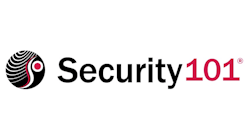As the oldest of the nation’s 76 million baby boomers enters their 70s, many are exploring options to meet their housing, social and medical needs in retirement – but they do not want sterile hospital-like environments. They prefer communities with lifestyle choices, and they are willing to pay for amenities that provide them with technology and greater convenience.
Developers of today’s assisted living communities have listened – they are creating facilities where people can transition through levels of care as they age. There are more than 30,000 of these communities in the U.S. (with that number growing rapidly), and they offer a wide range of resident services, including onsite entertainment, fitness centers and spas, housekeeping, restaurants, medication management and transportation.
Security is an important element to the one million baby boomers currently in assisted living communities. As residents’ physical and medical needs change over the years, so do their security requirements.
Three Security 101 integrators have vast experience in this market – in fact, they have combined to help secure more than 60 assisted living communities. Paul Chandegra, senior account executive at Security 101 San Diego, has been actively involved in the design, installation and service of security systems at 10 California and Arizona communities; Nathan Zautcke, owner of Security 101 Detroit, has secured dozens of Michigan communities; and Matt Netardus, system design and engineering for Security 101 Hampton Roads (Va.), has worked with about 10 facilities in southeastern Virginia.
“We try to keep the security as light as possible,” Chandegra says. “We don’t want residents feeling like they live in a prison; but, the level of security does gets tighter as you mine down from independent living, to assisted living, to skilled nursing and then, finally, to memory care.”
Access Control
Security begins at the perimeter with gated vehicular entries. Many independent living residents have their own apartments or villas and still drive. An RFID tag-based system communicates between a vehicle and the access control system to open the barriers.
Access control readers and/or keypads are also found throughout a community. Chandegra typically equips residential units with wireless locks communicating directly to the access system through a series of nodes running down a hallway – much like Wi-Fi. Residents carry proximity cards that can also be used for point of sale transactions at on-site spas, hair salons, dining rooms and gift shops.
The system’s audit trail is frequently used to convince older residents that misplaced items have not been stolen. “We can show them no one came into their unit and that helps us to close many investigations,” Chandegra explains.
Video Surveillance
Video also plays a major role in security, with cameras installed around the perimeter and in common areas including lobbies, hallways, nurses’ stations, exterior doors and stairwells. Pharmacies, executive offices, nurses’ stations and medical records and equipment rooms are also monitored and likely include intrusion sensors. Most states have laws preventing cameras in residential rooms.
Chandegra says the use of cameras has exploded over the past 10 years. “(At first), the price for an average system was about $25,000 to $50,000; now it is not unusual for larger communities to have systems topping $1 million,” he says. When pressed to prove return on investment, Chandegra says he shows customers how additional cameras result in fewer liability and theft claims, reduced workman’s compensation injuries and increased staff productivity.
Memory care sections are the most secure areas in assisted care communities. Many of these residents suffer from dementia and may wander if given the chance. Doors in and out of these sectors are locked at all times; staff members and regular visitors are provided with PINs to enter or leave the area; and residents wear Bluetooth pendants or bracelets that communicate with door-mounted readers. If the patient (and pendant) pass through the door, the system initiates an alert at the nurses’ station.
Zautke says memory care sector escapes are one of the biggest fears. “Systems do fail and if the nearest nurse is a floor away when an alarm goes off it might take 30 seconds to get to the door,” he explains. “That is a long time for a confused senior to be outside. You need cameras trained on the entries to help staff quickly locate a wandering resident.”
Other Technology Solutions
Video intercom systems are often installed at the vehicular and other entries and in common areas, enabling two-way communication between residents and staff. From a security operations center, guards can use the intercoms to remotely open a gate or door for approved visitors.
Netardus says he prefers to integrate patient wandering systems, temperature and water sensors and other devices into the access control system, while cameras are linked to provide video of alarm situations. The result is a more rapid response to potentially dangerous or damage-causing events.
Is all the technology too much for older residents? The integrators agree the many devices may overwhelm some, especially the most elderly. Chandegra advises to take into account the community’s location when specifying electronic security systems.
“We saw a very interesting trend about five years ago when we worked a new community in the San Francisco Bay area,” he says. “We put in technologically advanced systems and the residents completely embraced them. That probably has something to do with many of them having worked in Silicon Valley. The adjustment has been more challenging in some of our other communities.”
Still, as younger seniors move in, many ask for – and often receive – additional security and smart home automation systems in their private units.
RMR Opportunities
Often, “equipment failure” results from the assisted-living industry’s high employee turnover; in fact, Zautke says that many repair calls are the result of employee error. Thus, regular staff training sessions can help reduce these calls while providing an opportunity for RMR. Alarm monitoring and service maintenance agreements are more traditional RMR opportunities.
“If you don’t have a maintenance agreement in place, assisted living customers can blow you away,” Zautke says. “You need that agreement to be able to provide the almost instant service these facilities require. You also want to agree up front what constitutes a true emergency and which problems can wait a couple of days to be serviced.”
Netardus says his group likes to install IP-based systems in order to involve a community’s IT staff. “IT people are used to service agreements on their computer hardware and software – they get it, and they will budget for it,” he says.
Moving into the Market
All three integrators have plenty of advice for integrators who want to expand their services into the assisted living market.
Chandegra constantly reminds himself the work at an assisted living community is different than securing other commercial locations. People come and go from an office complex, hotel or retail outlet. For assisted care residents, these communities are their homes. “I always try to keep that thought in mind as we design and install a security system,” he said. “Our goal is to create a sense of safety and security that’s critical to the people living in these communities – and their families.”
When it comes to some older and/or smaller facilities, the first challenge is getting the leadership to buy into a unified security solution. For many of these facilities, the security function is handled by a facility manager or human resource person. “They don’t see themselves as security directors,” Netardus says. “We urge management to add ‘security’ to a person’s title – that way, they see the function as something they own and it seems to make a difference in how they approach the job. Now, they not only care about whether a system is working today, but they think about what they will need over the next five or 10 years.”
It is also important to have a thorough knowledge of state and local regulations affecting assisted living communities. “Current laws may not be the same three to six months from now,” Zautke says. “You have to keep on top of safety and security regulations to not leave your customers open to fines.”
He also urges integrators to have an in-house IT staff capable of installing data systems. “We’ve won a lot of bids by being a full-service, turnkey integrator,” Zautke adds.
Netardus recommends adding equipment that contributes more than simply security functions. “Look for devices that benefit multiple departments, such as maintenance, HR, legal and the medical staff, and get them to contribute funding to provide a more robust overall security system,” he advises.
Kevin Schaefer is the owner of the Security 101 San Diego and Security 101 Los Angeles franchises. Request more info about the company at www.securityinfowatch.com/12115421.



